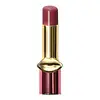What's inside
What's inside
 Key Ingredients
Key Ingredients

 Benefits
Benefits

 Concerns
Concerns

 Ingredients Side-by-side
Ingredients Side-by-side

Isoamyl Laurate
EmollientIsodecyl Neopentanoate
EmollientOctyldodecanol
EmollientDicalcium Phosphate
AbrasiveSilica
AbrasiveSynthetic Wax
AbrasiveC10-18 Triglycerides
EmollientHelianthus Annuus Seed Wax
Skin ConditioningKaolin
AbrasiveLimnanthes Alba Seed Oil
Skin ConditioningEuphorbia Cerifera Wax
Synthetic Beeswax
Emulsion StabilisingEthylhexyl Palmitate
EmollientSilica Silylate
EmollientCaprylic/Capric Triglyceride
MaskingPolyhydroxystearic Acid
EmulsifyingTetrahexyldecyl Ascorbate
AntioxidantTocopheryl Acetate
AntioxidantDisteardimonium Hectorite
StabilisingEthyl Vanillin
MaskingTribehenin
EmollientIsostearic Acid
CleansingLecithin
EmollientPentaerythrityl Tetra-Di-T-Butyl Hydroxyhydrocinnamate
AntioxidantPolyglyceryl-3 Polyricinoleate
EmulsifyingRicinus Communis Seed Oil
MaskingSorbitan Isostearate
EmulsifyingHydrolyzed Sodium Hyaluronate
Skin ConditioningSodium Hyaluronate
HumectantLactic Acid
BufferingHydrogenated Castor Oil
EmollientPalmitoyl Tripeptide-1
Skin ConditioningCI 77491
Cosmetic ColorantCI 15850
Cosmetic ColorantCI 42090
Cosmetic ColorantIsoamyl Laurate, Isodecyl Neopentanoate, Octyldodecanol, Dicalcium Phosphate, Silica, Synthetic Wax, C10-18 Triglycerides, Helianthus Annuus Seed Wax, Kaolin, Limnanthes Alba Seed Oil, Euphorbia Cerifera Wax, Synthetic Beeswax, Ethylhexyl Palmitate, Silica Silylate, Caprylic/Capric Triglyceride, Polyhydroxystearic Acid, Tetrahexyldecyl Ascorbate, Tocopheryl Acetate, Disteardimonium Hectorite, Ethyl Vanillin, Tribehenin, Isostearic Acid, Lecithin, Pentaerythrityl Tetra-Di-T-Butyl Hydroxyhydrocinnamate, Polyglyceryl-3 Polyricinoleate, Ricinus Communis Seed Oil, Sorbitan Isostearate, Hydrolyzed Sodium Hyaluronate, Sodium Hyaluronate, Lactic Acid, Hydrogenated Castor Oil, Palmitoyl Tripeptide-1, CI 77491, CI 15850, CI 42090
Pentaerythrityl Tetraisostearate
EmollientDiisostearyl Malate
EmollientBis-Diglyceryl Polyacyladipate-2
EmollientPolyglyceryl-3 Diisostearate
EmulsifyingPolybutene
Triisostearin
Skin ConditioningPEG-45/Dodecyl Glycol Copolymer
Emulsion StabilisingCandelilla Cera
EmollientPolyethylene
AbrasiveSynthetic Wax
AbrasiveMica
Cosmetic ColorantDimer Dilinoleyl Dimer Dilinoleate
EmollientOzokerite
Emulsion StabilisingAluminum Calcium Sodium Silicate
Aroma
Butyrospermum Parkii Nut Extract
EmollientC10-18 Triglycerides
EmollientCaprylic/Capric Triglyceride
MaskingCocos Nucifera Oil
MaskingDiethylhexyl Syringylidenemalonate
Skin ProtectingGlyceryl Dioleate
EmollientPentaerythrityl Tetra-Di-T-Butyl Hydroxyhydrocinnamate
AntioxidantPersea Gratissima Oil
Skin ConditioningSilica
AbrasiveSodium Hyaluronate
HumectantSynthetic Fluorphlogopite
Tin Oxide
AbrasiveTocopheryl Acetate
AntioxidantTriolein
Skin ConditioningIron Oxides
CI 77891
Cosmetic ColorantCI 45410
Cosmetic ColorantCI 15850
Cosmetic ColorantCI 42090
Cosmetic ColorantCI 19140
Cosmetic ColorantPentaerythrityl Tetraisostearate, Diisostearyl Malate, Bis-Diglyceryl Polyacyladipate-2, Polyglyceryl-3 Diisostearate, Polybutene, Triisostearin, PEG-45/Dodecyl Glycol Copolymer, Candelilla Cera, Polyethylene, Synthetic Wax, Mica, Dimer Dilinoleyl Dimer Dilinoleate, Ozokerite, Aluminum Calcium Sodium Silicate, Aroma, Butyrospermum Parkii Nut Extract, C10-18 Triglycerides, Caprylic/Capric Triglyceride, Cocos Nucifera Oil, Diethylhexyl Syringylidenemalonate, Glyceryl Dioleate, Pentaerythrityl Tetra-Di-T-Butyl Hydroxyhydrocinnamate, Persea Gratissima Oil, Silica, Sodium Hyaluronate, Synthetic Fluorphlogopite, Tin Oxide, Tocopheryl Acetate, Triolein, Iron Oxides, CI 77891, CI 45410, CI 15850, CI 42090, CI 19140
Ingredients Explained
These ingredients are found in both products.
Ingredients higher up in an ingredient list are typically present in a larger amount.
C10-18 Triglycerides is a skin conditioning and texture-enhancer.
It is created from glycerin and a mixture of C10-18 fatty acids.
This ingredient improves spreadability and helps thicken a product.
According to manufacturers, it usually comes from vegetable-based saturated fatty acids. Common bases for this ingredient are coconut oil, palm kernel oil, or both.
Due to the melting point being close to skin temperature, it is usually used in lip products.
Triglycerides are a main component of fat in the human body.
Learn more about C10-18 TriglyceridesThis ingredient is an emollient, solvent, and texture enhancer. It is considered a skin-softener by helping the skin prevent moisture loss.
It helps thicken a product's formula and makes it easier to spread by dissolving clumping compounds.
Caprylic Triglyceride is made by combining glycerin with coconut oil, forming a clear liquid.
While there is an assumption Caprylic Triglyceride can clog pores due to it being derived from coconut oil, there is no research supporting this.
Learn more about Caprylic/Capric TriglycerideCi 15850 is the pigment color red. It is an azo dye and created synthetically.
Azo dyes need to be thoroughly purified before use. This allows them to be more stable and longer-lasting.
This ingredient is common in foundations, lipsticks, and blushes. This color is described as brown/orangey red.
It has many secondary names such as Red 6 and Red 7. According to a manufacturer, Red 6 usually contains aluminum.
Learn more about CI 15850Ci 42090 is a synthetic dye created from petroleum. It is used to give a bright blue color to cosmetics, medicine, and food.
Pentaerythrityl Tetra-Di-T-Butyl Hydroxyhydrocinnamate (long name, huh?) is a synthetic antioxidant.
It is used to help stabilize other antioxidants or prevent the color from changing in a product.
As an antioxidant, it helps fight free-radical molecules. Free-radical molecules are capable of damaging our cells and other genetic material. Thus, antioxidants may reduce the signs of aging.
This ingredient is oil-soluble.
Learn more about Pentaerythrityl Tetra-Di-T-Butyl HydroxyhydrocinnamateSilica, also known as silicon dioxide, is a naturally occurring mineral. It is used as a fine, spherical, and porous powder in cosmetics.
Though it has exfoliant properties, the function of silica varies depending on the product.
The unique structure of silica enhances the spreadability and adds smoothness, making it a great texture enhancer.
It is also used as an active carrier, emulsifier, and mattifier due to its ability to absorb excess oil.
In some products, tiny microneedles called spicules are made from silica or hydrolyzed sponge. When you rub them in, they lightly polish away dead skin layers and enhance the penetration of active ingredients.
Learn more about SilicaSodium Hyaluronate is hyaluronic acid's salt form. It is commonly derived from the sodium salt of hyaluronic acid.
Like hyaluronic acid, it is great at holding water and acts as a humectant. This makes it a great skin hydrating ingredient.
Sodium Hyaluronate is naturally occurring in our bodies and is mostly found in eye fluid and joints.
These are some other common types of Hyaluronic Acid:
Learn more about Sodium HyaluronateSynthetic Wax is created from fossil fuels such as natural gas. It is used to enhance texture, adjust pH, and as an occlusive.
It may also be used as an abrasive ingredient to exfoliate the skin.
Synthetic Wax may not be fungal acne safe.
Learn more about Synthetic WaxTocopheryl Acetate is AKA Vitamin E. It is an antioxidant and protects your skin from free radicals. Free radicals damage the skin by breaking down collagen.
One study found using Tocopheryl Acetate with Vitamin C decreased the number of sunburned cells.
Tocopheryl Acetate is commonly found in both skincare and dietary supplements.
Learn more about Tocopheryl Acetate